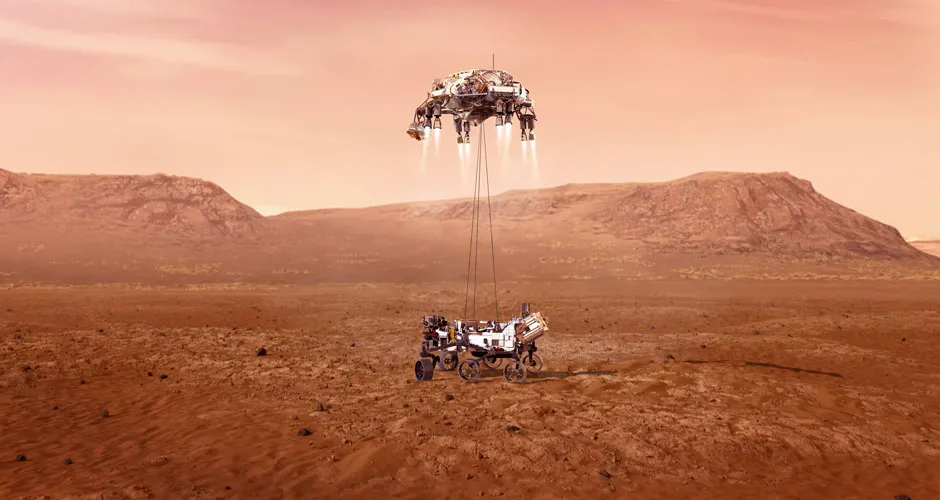After touching down on the Martian surface yesterday (18 February), NASA’s Perseverance rover has sent back its first images from the Red Planet.
The 1025kg vehicle transmitted two sepia images of the Mars landscape, showing rocks on the ground, the horizon and a shadow of the craft itself. Taken shortly after landing, the images were blurry due to dust kicked up during descent.
Perseverance posted the images to its Twitter account, alongside the (rather bleak) message it was taking a first look at its “forever home”.
More images, videos and sounds from the rover are expected to be transmitted over the weekend. After being captured, they will take 11 minutes to reach Earth due to the more than200 million km between the two planets.
Initially launched in July 2020, Perseverance entered the Martian atmosphere at a speed of over 20,000 km/h. There it commenced its perilous EDL (Entry, Descent and Landing) manoeuvres, arriving on the surface with help of a hovering ‘sky crane’ that lowered Perseverance to the ground with cables.

Early indications suggest Perseverance landed on a relatively flat surface nearby several sand dunes in the Jezero crater. The rover may have to navigate these dunes to reach an ancient river delta that scientists hope is home to fossilised microorganisms.
They believe that while the water may be long gone, somewhere within the crater – or along its 610m tall rim – evidence that life once existed there could be waiting.
Any hunt for these signs will include the rover’s 23 cameras, especially Mastcam-Z, which is located on the rover’s mast.
The mission’s science team on Earth can task Perseverance’s SuperCam instrument – also on the mast – to fire a laser at a promising target, generating a small plasma cloud that can be analysed to help determine its chemical composition.
“It’s amazing to have Perseverance join Curiosity on Mars and what a credit to the team," Steve Jurczyk, NASA's acting administrator, said.
“Just what an amazing team to work through all the adversity and all the challenges that go with landing a rover on Mars, plus the challenges of COVID. And just an amazing accomplishment."
Read more about the science of Mars:
- Mars: Interesting facts, figures and fun questions about the Red Planet
- The next great search for life on Mars
Perseverance deputy project manager Matt Wallace added: “The good news is the spacecraft, I think, is in great shape.”
The Perseverance rover also landed carrying Ingenuity, a 1.8kg solar-powered mini helicopter. NASA is hoping its carbon-fibre rotors (spinning at 24,000 RPM) will make Ingenuity the first rotorcraft to fly over Mars. It is expected to take flight in coming weeks.
During its stay on the planet, Perseverance will test a method for producing oxygen from the Martian atmosphere and attempt to identify resources such as subsurface water needed for a human colony.
Read more Mars about the science of Mars